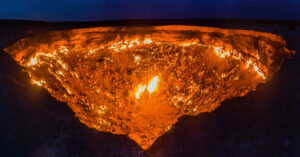We have always known the Sahara as the world’s largest desert, bone dry and barren, but this has not always been the case. In the last 800,000 years, the Sahara has periodically turned green, and researchers now think they know why.
Researchers delved into the climate history of the North African desert. Every 21,000 years, regular wet periods drench the usually dry desert and fill it with plants, lakes, and rivers.
“The cyclic transformation of the Sahara into savannah and woodland ecosystems is one of the most remarkable environmental changes on the planet,” said Edward Armstrong, the lead author of the new study.

Photo: Shutterstock
The study simulated the moist periods that occur in the desert. This helped the team understand why and when they occurred. It seems that the Earth’s orbit — specifically, orbital precession — causes these periodic “greenings.”
When the earth wobbles on its axis, it affects the amount of energy that our planet receives in different seasons. This impacts the African monsoon, and in turn, the overall climate. Though researchers already suspected that this was the case, no one has confirmed it through modeling until now.
In the northern hemisphere, orbital precession causes warmer summers. This triggers the so-called North African Humid Period, when monsoons and rain in the Sahara become much stronger. A verdant carpet results.
The only times when the 21,000-year cycle did not occur was during the ice ages. As our atmosphere cooled, the monsoon did not function normally.

Photo: Shutterstock
The green periods would have allowed the dispersal of many species, including humans, from North Africa to the rest of the world. They created livable corridors to other continents, and movement between them became possible.
“The Sahara region is kind of a gate controlling the dispersal of species between both North and Sub-Saharan Africa, and in and out of the continent. The gate was open when the Sahara was green and closed when deserts prevailed,” explained study co-author Miikka Tallavaara.






